1. Bolivia's "Road of Death"
North Yungas Road is hands-down the most dangerous in the world for motorists. If other roads could be considered impassable, this one clearly endangers your life. It runs in the Bolivian Andes, 70 km from La Paz to Coroico, and plunges down almost 3,600 meters in an orgy of extremely narrow hairpin curves and 800-meter abyss near-misses.
A fatal accident happens there every couple of weeks, 100-200 people perish there every year. In 1995 the Inter-American Development Bank named the La Paz-to-Coroico route "the world's most dangerous road."





(images via 1, 2)
The buses and heavy trucks navigate this road, as this is the only route available in the area. Buses crowded with locals go in any weather, and try to beat the incoming traffic to the curves.
It does not help that the fog and vapors rise up from the heavily vegetated valley below, resulting in almost constant fogs and limited visibility. Plus the tropical downpours cause parts of the road to slide down the mountain.





(images via 1, 2, 3)
Apparently some companies make business on the road's dubious fame by selling the extreme bike tours down that road. "Gravity Assisted Mountain Biking" is one of them.
If you are nuts enough to consider it, please be advised that you will be only adding to the road hazards, as it's hard to spot a cyclist on the road's hairpin curves, and your shrieks (as you fall down the abyss) will disturb the peace and quiet of the villagers nearby.



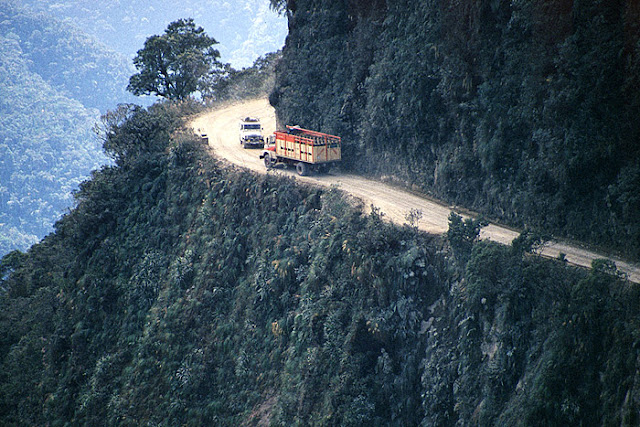

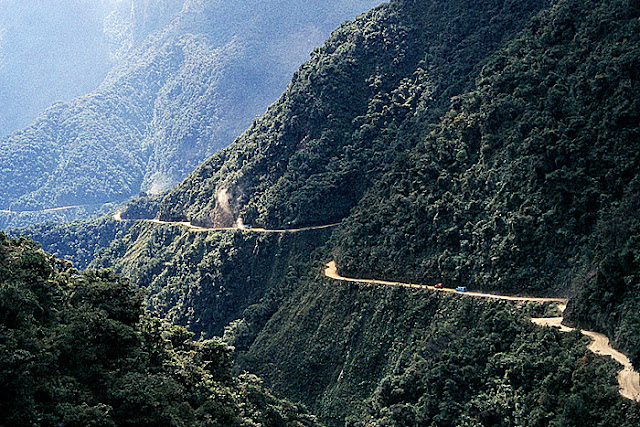
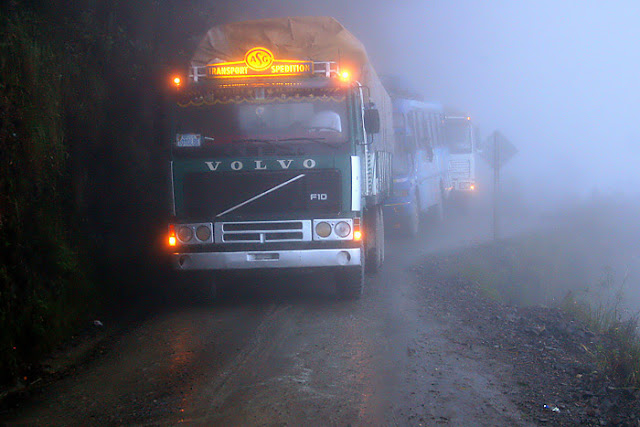
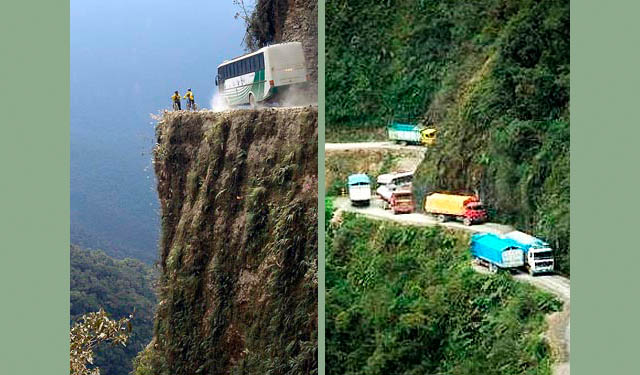
(images via MarkoP, some originals unknown)
2. Russian Siberian Road to Yakutsk
This is the official federal-government highway to Yakutsk, and it is also the only one to get there. As there are no other roads, the intrepid motorists are doomed to wallow in this dirt, or wait in week-long 100 km car line-ups (they say women even gave birth there while waiting).
This can turn into a major humanitarian disaster during rainy spells, when the usual clay covering of the road turns into impassable mud blanket, swallowing trucks and tractors alike. In the meantime the city has to partly airlift food products.
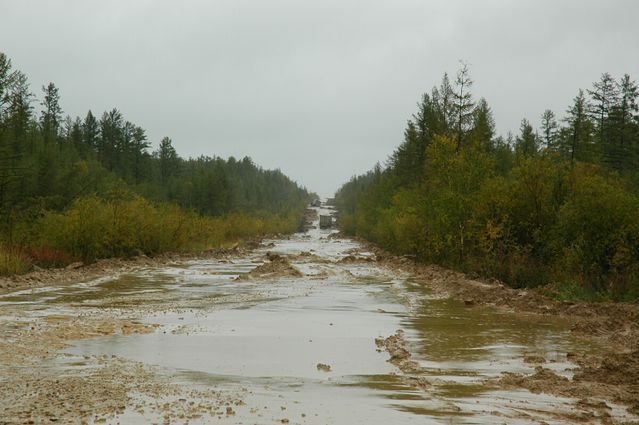
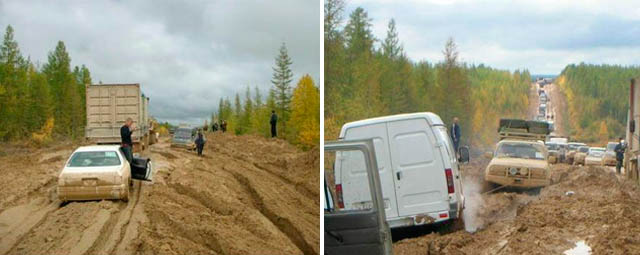
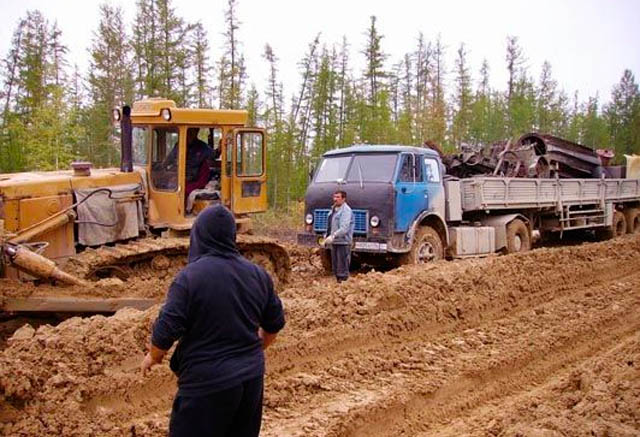
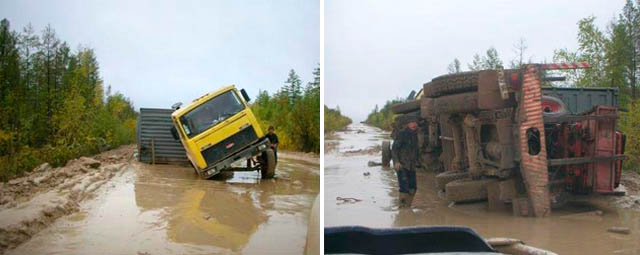
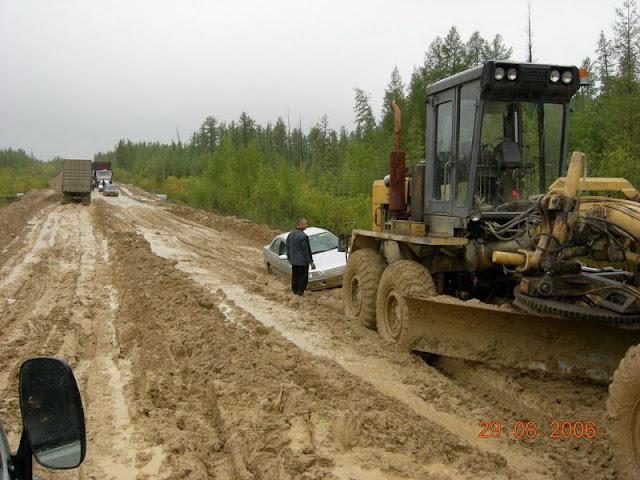
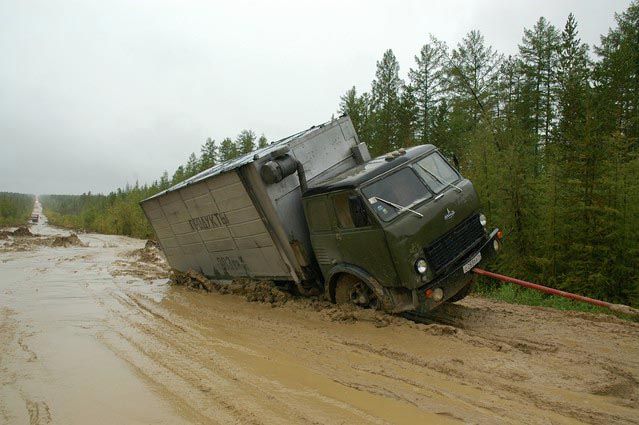
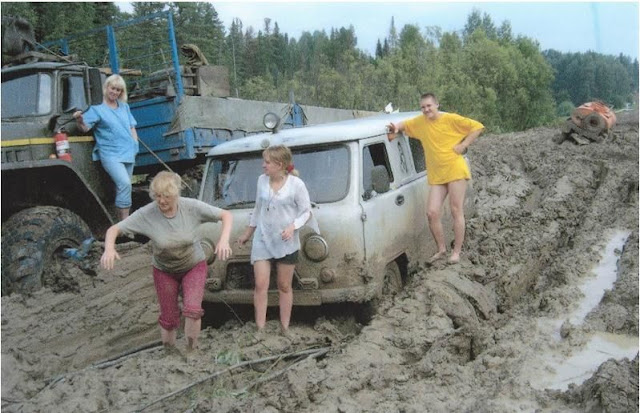

(images credit: Pasik's Journal)
Here is an aerial shot of this road in winter:

(image via)
The "Haunted Road" in Russia
There are also rumors of seemingly quite normal 30 km stretch of Russian country road, which nevertheless gets an unexplained amount of car accidents; the locals suspect underground gas seepage which causes motorists to fall asleep...
This creepy tale is supported by the evidence of car crash statistics and the tales of survivors, who do not remember anything prior to the crash and act strangely "drugged" afterwards. Hopefully this will be properly investigated before the road claims more victims.
3. Russian-Georgian "Military" Mountain Roads
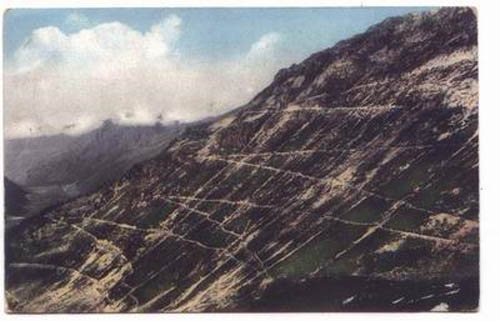
Sukhumi "Military" road in the former Soviet Georgia, in Caucasus mountains, which truckers and wine-drunk crazy "Lada" drivers navigate with the utter abandon, typical of the local mountain people... but we could not locate any photos of it. Only this old postcard... If you have any more pics, send them in.
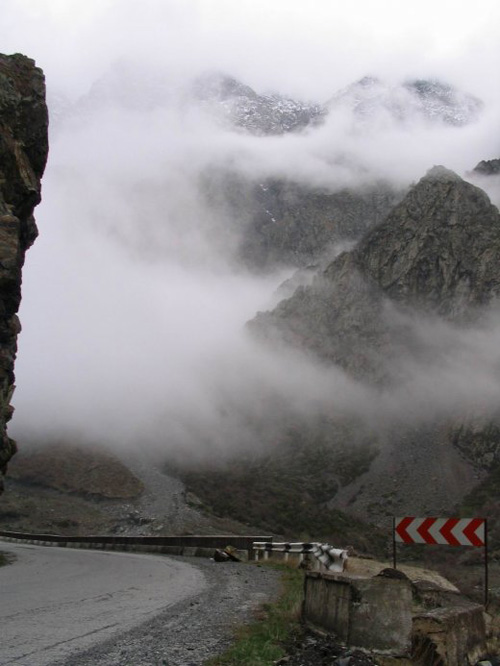
4. Nepal, Tibet & Bangladesh Roads
Those bound for Mount Everest will know what we talk about. There are some hair-raising, hardly maintained roads in the area - which bus and truck drivers have to negotiate to get to small villages. A road in Nepal, leading from From Katmandu to Everest Base Camp:

A typical India-Nepal Road:
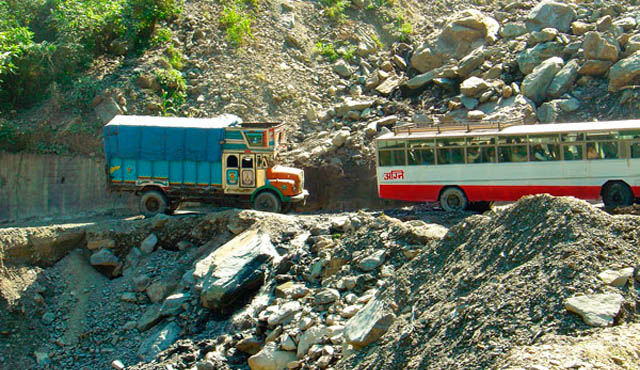
(originals unknown)
5. Most Dangerous Tourist Hiking Trail (China)
Not a car road, but the most hair-raising experience you can have on your own two legs. This is a heavy-tourist traffic area in Xian.
The hanging wooden planks are a real tourist hike path, which hundreds of daredevils navigate - with no safeguards in sight. Try to step on them in slippery / snowy conditions... or better not.
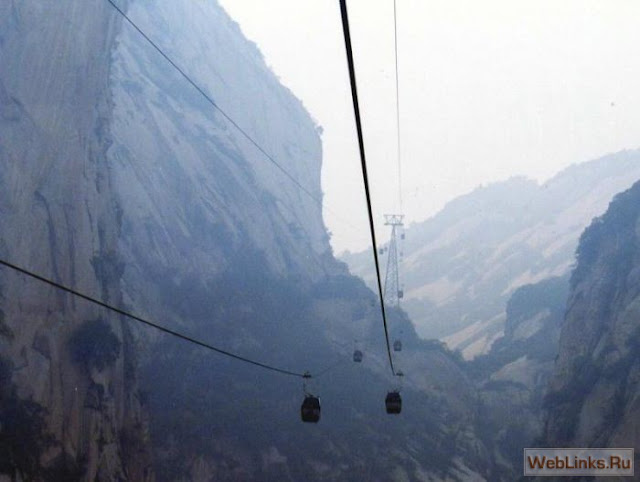
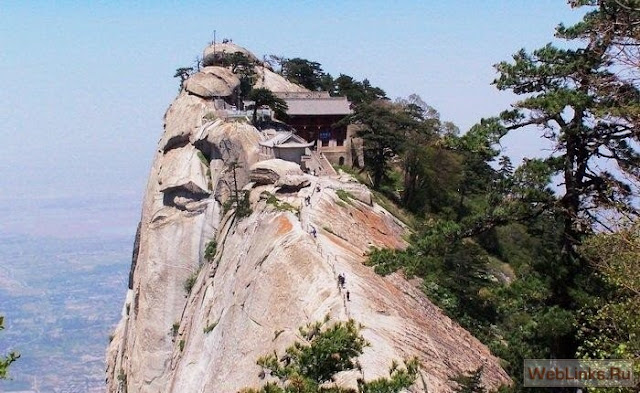
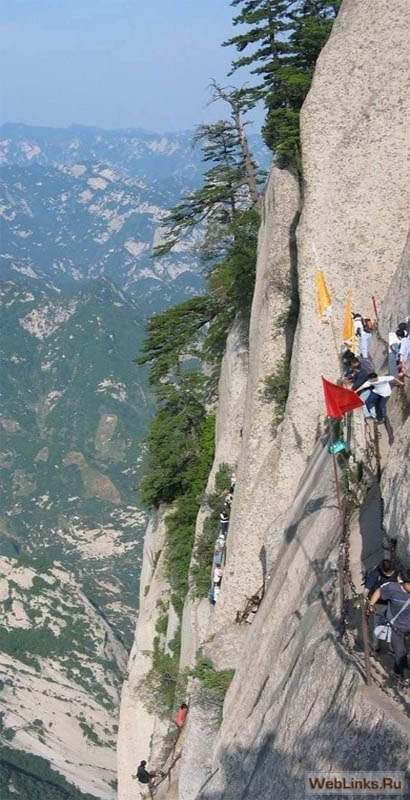

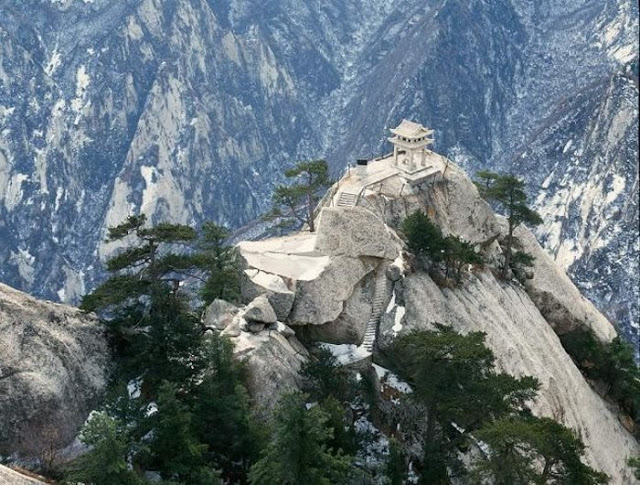
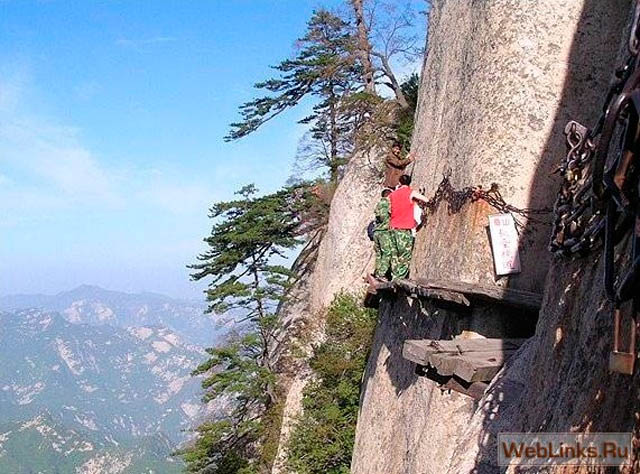
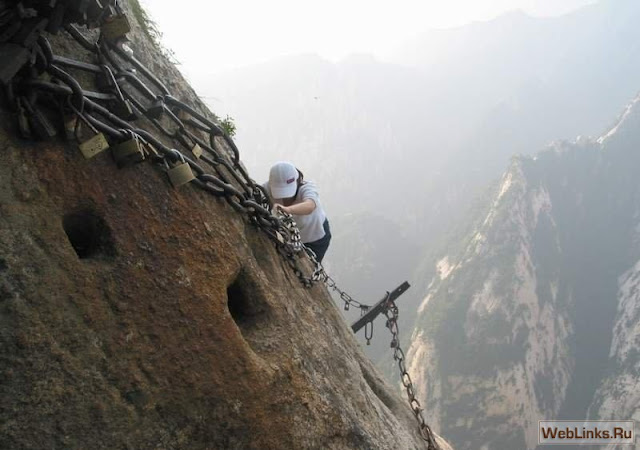
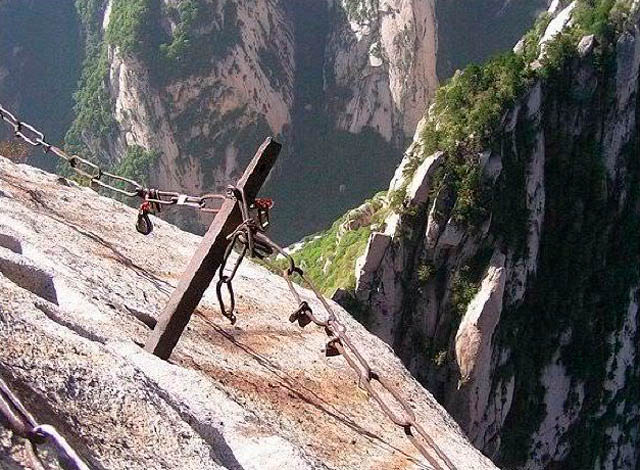
THANKS YOU |
|


